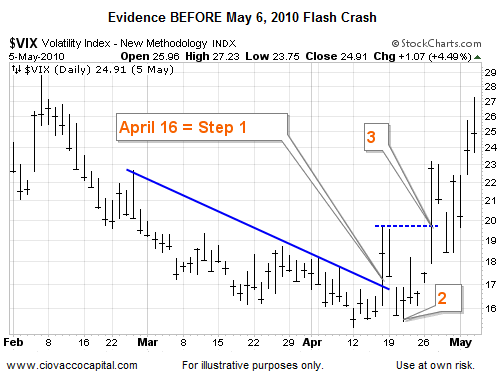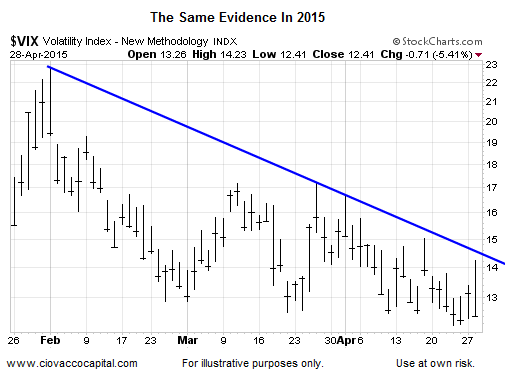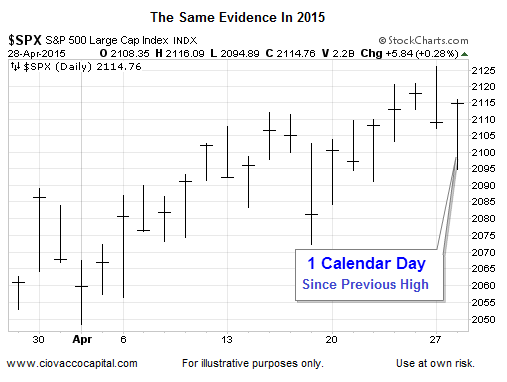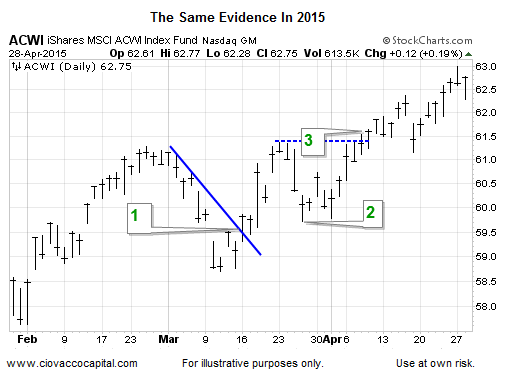Fear Causes Underinvestment Syndrome
It is very common for “fear of bad things happening soon” to cause investors to hold significant amounts of cash, which can be extremely harmful to long-term investment performance and your future quality of life.
A Chronic Condition Based On Fear
If you regularly keep cash on the sidelines, a previous research piece, Concerned About Being Underinvested? You Should Be, provides specific examples of how fear can impact your net worth and retirement income.
Action Cures Fear
If fear can adversely impact our lives, how can we reasonably reduce fear of the unknown? The answer is by gaining a better understanding of investment probabilities. If the probably of bad things happening is relatively low, we can sleep better at night.
A Crash Can Come Without Warning…Right?
One of the most difficult investment risk-management events in recent market history is the May 6, 2010 “Flash Crash”. Can we use facts to help us better understand the odds of a similar plunge occurring in 2015? After reviewing the facts below, you can make your own call.
A Spike In Fear Well Before The Flash Crash
The Flash Crash occurred on May 6, 2010. All of the 2010 charts below are as of May 5, allowing us to see the hard and observable evidence before the Flash Crash. For example, the VIX “Fear Index” started to spike well before the Flash Crash. As shown below, the VIX started saying “pay closer attention” on April 16 when it broke a downward-sloping trendline. It went on to complete steps 2 and 3 of the three steps needed for a trend change before the end of April 2010 (or well before the Flash Crash).

How Does The Same Chart Look Today?
Is the VIX showing a similar spike in fear in 2015? No, the present-day VIX continues to make a series of lower highs and lower lows.

Extreme Fear Is Deflationary
When investors begin to become concerned about earnings and the economy, they tend to migrate toward defensive assets, such as long-term Treasuries (TLT). Bonds started to say “concerns are increasing” on April 7, 2010 or almost a full month before the Flash Crash.

Are Bonds Indicating Increasing Fear Now?
Instead of making higher and fearful highs in recent weeks, iShares 20+ Year Treasury Bond (ARCA:TLT) has been doing just the opposite, making lower lows. The chart below, like the 2015 VIX, does not align with increasing fear.

Stocks Gave Some Warning
When a trendline breaks, it tells us bullish conviction is starting to wane relative to bearish conviction. As shown in the chart below, the S&P 500 broke a trendline in late April 2010, then went on to make a lower high (see 2) and a lower low (3). All three observable steps occurred before the Flash Crash.

The S&P 500 Looks Much Better Today
Could the 2015 chart below morph into a more concerning look? Sure it could, but that aligns with “fear of what may happen” rather than something hard and observable.

Flash Crash Was Not Easy
The evidence shown previously (VIX and bonds) speaks to the concept of the weight of the evidence. One of the more difficult aspects of the 2010 Flash Crash was the S&P 500 had made a higher high just 8 calendar days before the May 6 event.

Higher Highs Speak To Bullish Conviction
For stocks to make a higher high, the conviction to own stocks has to be higher than the conviction to sell stocks. In 2015, the S&P 500 is only one day removed from the most recent highest high. More importantly, unlike 2010, the S&P 500 has not made a lower low recently.

The Broader The Market, The Better The Evidence
The S&P 500 contains 500 stocks. The NYSE Composite Stock Index contains thousands of stocks, and thus gives a broader view of the stock market’s overall health. Did the NYSE send up some “be more careful” flares before the May 6 Flash Crash? Yes, the NYSE completed the 3 steps needed for a bearish trend change in late April 2010.

How Does The Same Chart Look Today?
Bullish conviction was recently strong enough relative to bearish conviction to push the NYSE to a new high and above areas that rejected price for over nine months. Unlike May 2010, the NYSE Composite has several months of consolidation below, which may attract buyers to provide support for stocks.

Global Stocks Showed Weakness In 2010
As shown in the chart below, global stocks (iShares MSCI ACWI (NASDAQ:ACWI)) completed the 3rd bearish step on April 27, 2010, or well before the May 6 plunge.

A Recent Higher High In Global Stocks
We are no longer in a “the S&P 500 is the only game in town” market, which can be seen via the recent bullish higher high posted by stocks from all over the globe. Rather than seeing 3 bearish steps as we did in 2010, the same chart in 2015 has recently completed 3 bullish steps.

Is The Risk Of A Crash Zero?
No, the stock market can do anything at anytime - nothing is guaranteed. However, the charts above tell us the probability of a “crash-like” event occurring over the next several days is significantly lower today than it was in late-April/early-May 2010.
Could GDP Tip The Scales?
It should be noted that this is a short-term analysis, meaning the probabilities can change relatively quickly, highlighting the importance of ongoing assessment of risk. The charts shown above reflect the “knowns” as of Tuesday, April 28, 2015. The poor GDP reading on April 29 is new information and will be reflected in the charts during Wednesday’s trading session.
The Evidence Will Guide Us
If the evidence begins to change, our market model will assist us in making any necessary adjustments from a probability perspective. Central banks around the globe have been extremely aggressive with monetary policy, which means we respect the need for flexibility and a disciplined approach to risk management. As 2010 showed us, things can happen fast in the financial markets.
How About The Longer-Term View?
If you are looking for a longer-term view of risk on the global equity playing field, this week’s stock market video provides over 30 different charts to help us better understand market probabilities.
